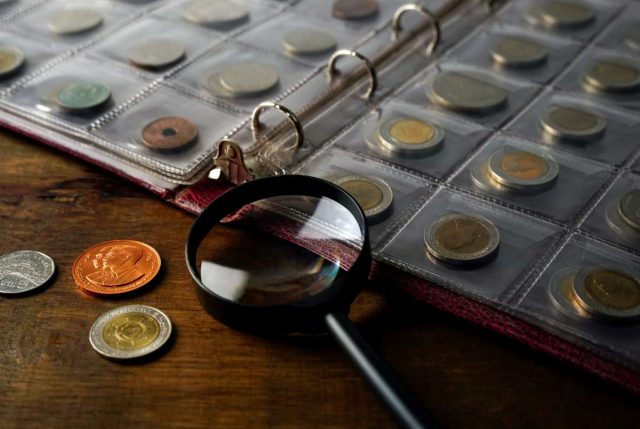A collector can typically determine a fairly accurate price for a coin microscope by opening a price guide or looking at realized auction prices. A coin microscope collector will be able to purchase or sell a coin with confidence after reviewing the price guides and realized prices. What about, on the other hand, mint errors for which there are no comprehensive price guides? How is the value of an error coin microscope determined?
A combination of information, such as understanding the type of mint error and the realized auction prices, as well as a review of how readily available they are currently on the market, might be the most effective way to accomplish this.
Which Error Type and Coin Do I Possess?
It can be difficult to determine this because mint errors are frequently scarce and uncommon. However, for the majority of mint error coins, it is typically fairly simple. Let’s break it down into several stages. How to figure out the value of a mint error coin microscope will be explained in the next section.
This necessitates determining your error type—is it an off-center, doublestrike, or other type? This information will be on the insert of the holder if your coin microscope was graded by a third-party grading service like PCGS. The insert of your coin ought to contain all of the most crucial information if it was graded by PCGS. You may likewise show your coin to a blunder expert who can maybe bring up some extra data about your coin, albeit the truly significant data will currently be all on the supplement.
Then, you can figure out if your coin’s grade, date, mintmark, or the coin issue on which the error occurs are unique. For instance, is the dime in question 1916-D Mercury? If this is the case, the coin’s final value will have to take into account its regular numismatic value.
Despite the fact that grading most mint error coins is more of an art than a science due to the fact that error coins typically have surfaces that are somewhat “deformed” from the norm, grade is still important. The value of an MS65 will almost certainly be higher than that of an MS61. A mint error coin’s value typically does not change by more than one grade point (for instance, an MS63 is unlikely to be worth less than an MS64).
Collect Pricing Data
Now that you have all of the pertinent information regarding your coin, it is time to collect pricing data.
Search for your coin in the prices-realized section of the websites of some of the most prominent coin auction companies. There are probably a few coins that are comparable to yours, and you can find out how much those coins sold for. Take into consideration the error, grade, and date/mintmark on your coin, as well as its appearance and description, to determine where it stands out the most in comparison.
Also, look at when the sale took place. The price will be much more accurate if it was recently sold than if it was sold ten years ago.
Check out the websites of some dealers in mint errors and look for coins that are similar to yours to see what they typically sell for. This will also assist in establishing a value. (1)
Different Elements
Prior to valuing your coin in view of all the data you have accumulated, consider in the event that there may be an imperfection in a portion of your information. Here are a few things to think about: Was the data you gathered recent, or was it from five years ago and, as a result, possibly out of date? Were the examination coins “close” yet bad correlations? Are any examples of your mint error coins currently available for purchase? If not, the coin may be worth more. Do you have a net grade on your coin because of scratches, cleaning, etc., or does it have issues like unattractive toning? Have you noticed that a lot of your error coins are being sold, and that their prices appear to be falling?
When looking at your coin’s price data, you should ask yourself these kinds of questions.
Set a Price for the Coin
If you believe that you have a sufficient amount of pricing information and that your coin is comparable to those that were sold at auction or on dealer websites, you can set a price for it. In most cases, pricing the coin at the average price of coins that were a good comparison in terms of realized and retail prices is the best option. In the event that you see that a broadstruck 1940s-time Mercury Dime in Mint State appears to sell for $100 to $200, your coin is most likely worth around $150. Your coin may be worth more in the $200 price range if it is of a higher grade or has better visual appeal. It may be worth closer to $100 if it has lower eye appeal or a low grade.
Also, keep in mind that there will always be outlier prices; A dealer may, from time to time, use an out-of-date price or simply “made up a number” when pricing error coins. Realized auction prices may be off, possibly as a result of two overzealous bidders who paid a lot more for a coin than it was actually worth. For pricing data, disregard those outliers and focus solely on the average, utilizing trustworthy sources.
Think About Getting a Second Opinion
If you’ve gone through these steps but still think your coin is unique in some way and doesn’t compare to any of the coins you researched, you should talk to a professional dealer of rare coins for advice. They might be able to help, or they might be able to direct you to someone who is aware of what you need.
This method for pricing your error coins will be largely accurate unless the coin is particularly rare or unusual. The majority of error coins are not that difficult to price. Special coins can have higher or lower prices. Coins with errors that are of a particularly high grade, have an appearance that is more dramatic than the typical example of its error, or for which there may have been a sudden increase or decrease in demand may warrant a price that is higher or lower than what the average suggests. If you need help figuring out the coin’s value and getting advice on how to sell it, ask a reputable dealer. (2)

Speaks from heart, always too passionate and driven by emotions. Spins the words with kindness & sharpness, intriguing your ever-inscrutable minds.




